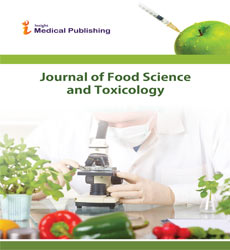Food Borne Diseases and Prevention
Abstract
Food is a substance that can be consumed, digested and assimilated so as to get energy, for growth, maintenance and life. Food from plant or animals, can become contaminated with antimicrobial-resistant bacteria and antibiotic resistance genes (ARGs). Microbiological contamination of foods of plant origin is responsible for foodborne illnesses worldwide. Water can also be an important source of antimicrobial residues. Best management practices should be adhered to concerted efforts should be made to mitigate their contamination at all stages of the food chain. If a heavy metal contaminates food and people eat it, they may subsequently get ill. If they do, they have a foodborne illness. Substances that get into food and make people ill are ‘food contaminants.’ Food poisoning symptoms may include cramping, nausea, vomiting, or diarrhea.
Amebiasis is a disease caused by the parasite Entamoeba histolytica. It can affect anyone, although it is more common in people who live in tropical areas with poor sanitary conditions. Botulism is a rare but serious illness caused by a toxin that attacks the body’s nerves. Although anybody can become infected, some people are more vulnerable, like.. • Babies and young children *Older adults *Pregnant women. • People with kidney or liver disease, HIV/AIDS or diabetes. The most common germs that cause foodborne disease are: • Norovirus *Salmonella *Clostridium perfringens. • Campylobacter *Staphylococcus aureus (Staph). Treatment-Most food poisoning is mild and resolves without treatment. Ensuring adequate hydration is the most important aspect of treatment. Doctors treat botulism with a drug called an antitoxin. If one has wound botulism, doctor may need to surgically remove the source of the toxin-producing bacteria and will give antibiotics, for recovery. Most food poisoning is mild and resolves without treatment. Ensuring adequate hydration is the most important aspect of treatment.
Open Access Journals
- Aquaculture & Veterinary Science
- Chemistry & Chemical Sciences
- Clinical Sciences
- Engineering
- General Science
- Genetics & Molecular Biology
- Health Care & Nursing
- Immunology & Microbiology
- Materials Science
- Mathematics & Physics
- Medical Sciences
- Neurology & Psychiatry
- Oncology & Cancer Science
- Pharmaceutical Sciences
